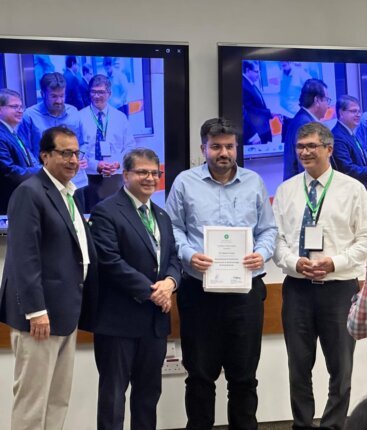Collaboration with Al-Ibrahim Eye Hospital aims to make early eye screening affordable and locally effective
KARACHI: In a major scientific breakthrough, the Pakistan Council of Scientific and Industrial Research (PCSIR) has developed the country’s first locally curated retinal image dataset to help detect diabetic retinopathy — one of Pakistan’s leading causes of preventable blindness.
The project, undertaken by PCSIR Labs Complex Karachi in collaboration with Al-Ibrahim Eye Hospital, aims to bridge a critical technological gap by creating an AI-ready dataset based on Pakistani patients, local imaging devices, and clinical realities.
Diabetic Retinopathy (DR) is an eye disease caused by high blood sugar levels that damage the retina’s small blood vessels, often progressing silently without symptoms. Experts warn that with nearly one in four adults in Pakistan now living with diabetes, the condition has become a hidden epidemic threatening the eyesight of millions.
“Most global AI models for diabetic eye disease are trained on foreign populations,” said PCSIR researcher Ghulam Mustafa, who is leading the study. “That means they often fail to interpret images from local patients or devices accurately. We wanted to change that.”
Using the newly developed dataset, PCSIR scientists tested two of the world’s most advanced retinal AI models, Moorfields DINOv2 (UK) and Shanghai MAE (China), to evaluate how effectively they detect diabetic eye disease in local patients. The results showed that DINOv2 demonstrated higher precision in identifying early-stage diabetic retinopathy, making it ideal for mass screening, while MAE achieved better accuracy in detecting advanced cases.
“These findings prove that AI systems perform more accurately when trained and tested on local data,” the research team noted, emphasizing the need for indigenous datasets in developing countries where imaging conditions and patient profiles differ from global standards.
The initiative is expected to pave the way for AI-powered diabetic eye screening programs across Pakistan, particularly in rural clinics and diabetic camps where eye specialists are scarce. According to PCSIR officials, integrating AI into early detection will help identify disease before vision loss occurs, reduce workload on overburdened specialists, cut screening costs through automation, and strengthen Pakistan’s capacity for local medical AI research.
“This is not just about technology, it’s about saving sight,” said the PCSIR official. “Through collaboration and ethical research, we are using science to improve people’s lives.”
The project marks PCSIR’s renewed focus on applied, socially impactful research and demonstrates how public science institutions can contribute directly to healthcare innovation and national self-reliance. With this initiative, Pakistan joins a select group of countries developing AI datasets tailored to their own populations, a move that could transform how diabetic blindness is diagnosed and prevented across the region.
“Turning vision loss into vision for the future, that’s what this initiative is about,” Mr Mustafa concluded.




